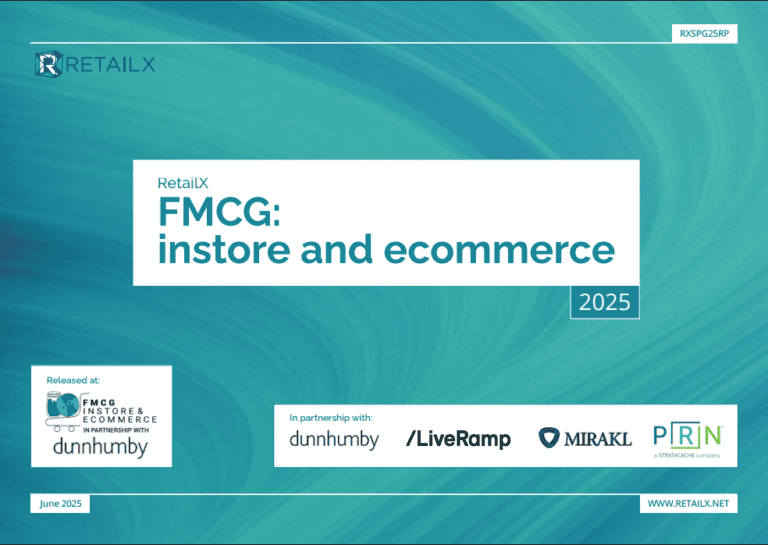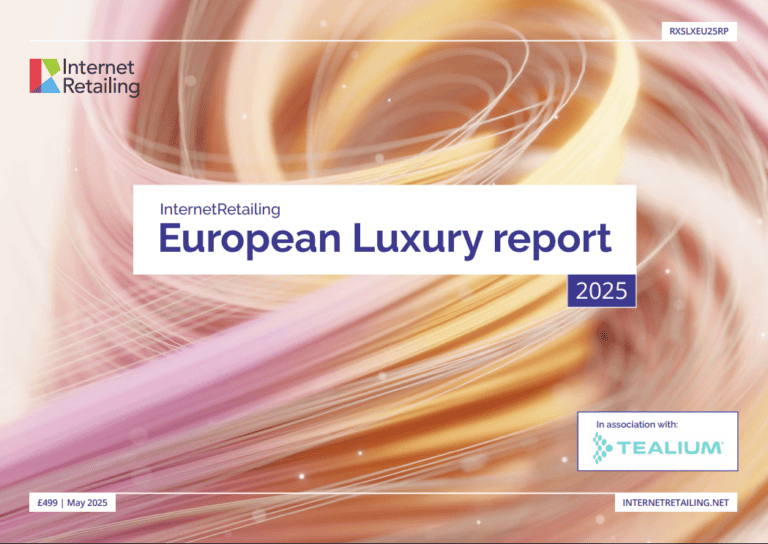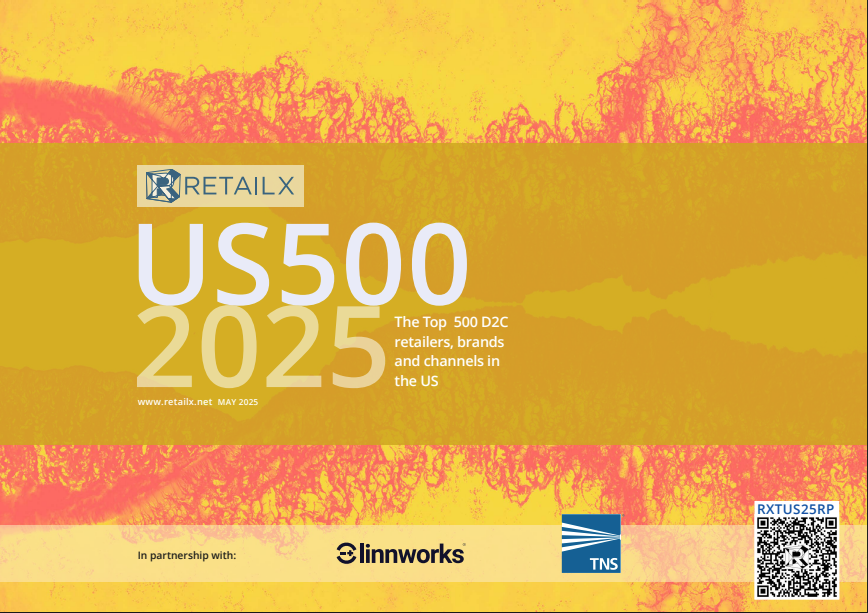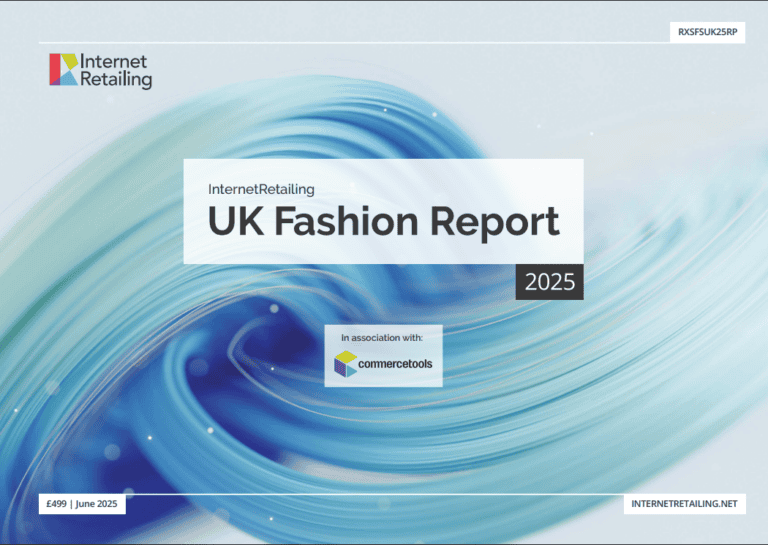Over the past 12 months, RetailX has published over 30 reports. These detailed, analytical studies of the omnichannel retail industry have ranked leading retailers across the UK, Europe and most recently the Globe.
Research has also focused on the shifts in the ecommerce landscape with ChanelX Europe’s Marketplace report highlighting the sheer power and percentage split of marketplaces. And as retailers across the world work to clean up their supply chain, the Global Sustainability report was there to track their progress.
As we wrap up for 2024, we have picked a cross section of charts featured in these investigative reports to showcase how dynamic the retail sector remains.

The UK Top500 2024 report is the tenth report in the series and mapped the shifts in the industry over the last decade, including the move towards ecommerce; buying across channels; and to an index where marketplaces and brands are ever-more important. Despite all the changes, one thing remains – Amazon’s Elite ranking.
Amazon is the only retailer to have featured consistently in the Elite group for the full ten years of this UK Top500 research. This first of our 12 Charts of Christmas [above] highlights how the elite and leading retailers have shifted over that time.

RetailX regularly asks thousands of shoppers about their online shopping habits as part of its ConsumerX research. Consumers’ answers help to guide RetailX research. More than 9,600 shoppers from 20 countries around the world took part in the surveys between August 2023 and May 2024, these results were harnessed for the Europe Top1000.
Asked about how often they shop online, the largest group of shoppers in five key European markets say they buy online more than once a month, while the second largest buys online at least once a week.

ChannelX Europe’s Marketplaces 2024 report profiled 24 leading marketplaces – covering pure-play, mixed and retailer marketplaces. It found the majority of traffic in Europe goes to multi-sector marketplaces, with Amazon and eBay unsurprisingly way out in front. Yet, these behemoths only take around 17% and 14% of European traffic respectively.
Behind them is a raft of ‘second tier’ multi-sector marketplaces, such as AliExpress, Allegro and Etsy, all getting single-digit percentages of traffic. Zalando, Shein and Decathlon also score well, reinforcing how fashion’s a leading specialist marketplace sector.
But it is the dominance of a very, very long tail of hundreds of other marketplaces players, each taking sub 0.5% traffic share, that is perhaps the most interesting detail. The European marketplace market is fragmented, comprising of a wide range of local players dominating in one or two local or region markets operating alongside a relatively low number of pan-national marketplaces that dominate in some regions but not others.

For the first time in 2024, RetailX published a dedicated look at Retail Media. The inaugural report investigated how this ‘new’ market came into being and what it means for the stakeholders across retail, brands, suppliers, agencies, media companies and tech vendors.
Between brand and customer lies a complex, interwoven ecosystem of brands, agencies, technology players and marketplaces. The above graphic showcases some of the models that define the retail media ecosystem.

Also for the first time in 2024, RetailX studied the Consumer Packaged Goods (CPG) sector. The pandemic boosted sales of cleaning products and some over-the-counter (OTC) medicines, leading to an initial rise in household essential CPG growth in 2020 and 2021. This growth has continued in the years since and across all the regions of Europe.
Yet much of this rise can be attributed to increased prices. CPG companies implemented significant price hikes in response to rising costs of materials, energy and labour. Leading CPGs have increased prices by over 20% on average since the third quarter of 2021, contributing to higher spending on household goods.

The Global Sustainability 2024 report found retailers and brands are sharing their green goals with consumers, with a real move towards circularity. Not only does this extend the life of products, it can also provide companies with additional business streams.
Some 27% of consumer electronics companies in the RetailX Global Top1000 have a repair scheme of some description, 40% of supermarkets offer a recycling scheme, as do almost a third of DIY retailers, 28% of consumer electronics retailers and a quarter of companies selling cosmetics.

In May, RetailX Event’s one-day conference dedicated to the subscription economy returned, with the launch of the 2024 Subscriptions report. As well as looking at which retailers are seeing the benefits of recurring revenue streams, the report also covered why consumers remain interested in subscription services.
Value for money is a key driver for subscribing to most products and services, with about a quarter of people saying it was the main reason for signing up to everything from clothing to cosmetics or food subscription boxes and music or video streaming. It is prized even more highly when it comes to annual payment for free or cheap deliveries. Convenience is also a particularly relevant factor.

Despite the global sports goods market seeing a correction from its pandemic peak, the sector remains fit and healthy, according to the Global Sports Goods report.
There has been a gradual recalibration in the sector across 2022 and 2023, with total online revenue from the sector hitting $42.3bn in 2023. This is down from 2022’s $43.4bn and both figures are way below 2021’s peak of $44.6bn.

Additionally, the UK fashion market began to normalise after its post-pandemic peak in 2021 when the ability to freely get out and about again gave UK shoppers a chance to refresh their wardrobes.
Buying habits had also changed significantly during the pandemic as sales of loungewear and activewear surged. UK shoppers were buying more widely once again.
Subsequently, the cost-of-living crisis hit, putting consumer budgets under pressure. Spending on fashion in the UK had already fallen in 2022 and in 2023 it fell further, down to £29.4bn.

Each report features a number of company profiles, each illustrated by performance graphics. In 2024 RetailX Intelligence was introduced, providing a platform for the benchmarking and comparison of the world’s leading retailers and brands.
The full European Luxury 2024 report looks at what makes businesses such as Louis Vuitton exemplary, while RetailX Intelligence aims to provide essential retail data at the touch of a button. A waitlist is available to join here.

Cosmetics and beauty sales online are increasing in what remains a challenging market for brands and retailers, the Global Beauty report found.
Economic and inflationary matters have impacted on the cosmetics and beauty industry in the last year, affecting prices of raw materials through to energy and shipping. Consumer spending across multiple retail categories has been deflated as a result of rising prices.

The Europe Growth 3000 list represents a vast array of retail experience and expertise. Fashion retailers dominate the Top50 of the list, with categories including sports equipment and clothing, homewares, jewellery and pet supplies also represented.
The presence of US and Japanese brands, such as Abercrombie & Fitch, Victoria’s Secret and Sekonda, reflects European shoppers’ appetite for global brands – some based in Europe and some further afield. The full list of 3,000 companies includes a hugely varied array of brands, retailers and marketplaces from family enterprises to niche, single market businesses.
Find all RetailX’s published and upcoming reports here.
There are also reports looking at Australia, Benelux, the Nordics, Germany and France.
Returns are discussed at length, with D2C covered, and the RetailDNA Value Chain series.
Stay informed
Our editor carefully curates two newsletters a week filled with up-to-date news, analysis and research, click here to subscribe to the FREE newsletter sent straight to your inbox and why not follow us on LinkedIn to receive the latest updates on our research and analysis.










